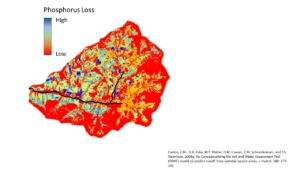As the Chesapeake Bay Program (CBP) passes the mid-point assessment, major point source discharges will have achieved (or nearly achieved) their final Total Maximum Daily Load (TMDL) nitrogen (N) and phosphorus (P) waste load allocations. Jurisdictions, however, still need to achieve substantial nutrient and sediment reductions from agricultural and urban nonpoint sources (NPS). Based on current understanding and modeling, the CBP estimates that agriculture and urban NPS need to achieve an additional 35 million and 12 million pounds of reductions, 1.3 and 0.6 million pounds of P reductions, and 941 and 594 million pounds of sediment, respectively to meet TMDL goals. State and local governments are poised to spend hundreds of millions of additional dollars to meet these goals, primarily by installing agricultural and urban nonpoint source best management practices (BMPs). Thus, BMP implementation stands at the center of CBP efforts to meet TMDL requirements. Yet, water quality monitoring suggests that the link between BMP implementation and load reductions is tenuous. In a recent STAC review, Keisman et al (2018) state “current research suggests that the estimated effects of conservation practices have not been linked to water quality improvements in most streams.” The Chesapeake Bay Watershed Model estimates substantial reductions in NPS loads, but monitoring data suggests little to no change in these loads between 1992-2012 (Keisman et al, 2018). A critical question is why? Potential explanatory factors include inadequate BMP coverage, poor implementation/maintenance, lag times between implementation and pollutant load reductions, pollutant transport and transformation processes that are incompletely understood, and inability to target BMPs to critical pollutant source areas. The purpose of this workshop was to make recommendations as to how the CBP can develop and integrate mechanisms to target BMPs to areas of the watershed producing disproportionate nutrient and sediment loads.

Easton, Z.M., D.R. Fuka, M.T. Walter, D.M. Cowan, E.M. Schneiderman, and T.S. Steenhuis. 2008a. Re-Conceptualizing the Soil and Water Assessment Tool (SWAT) model to predict runoff from variable source areas. J. Hydrol. 348: 279-291
